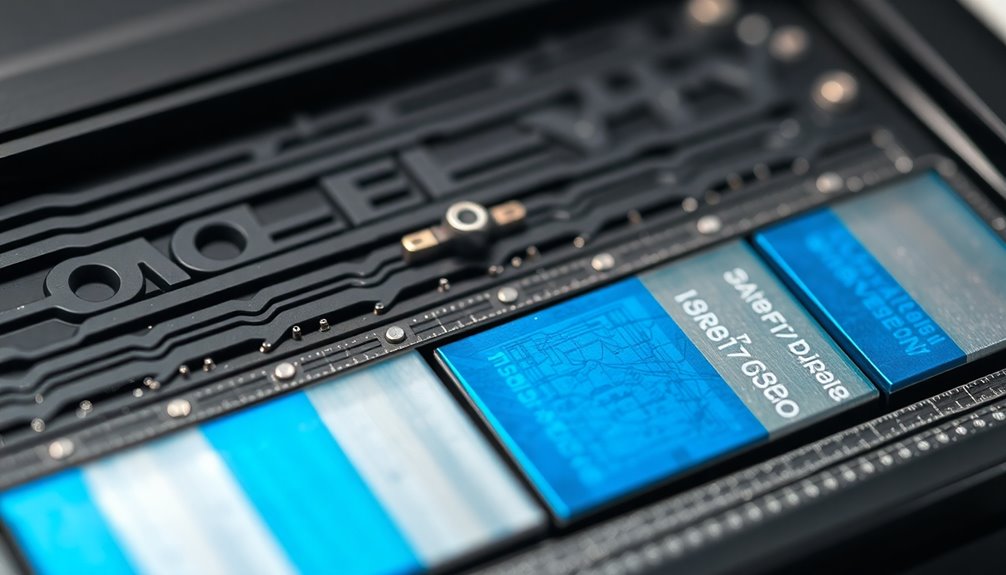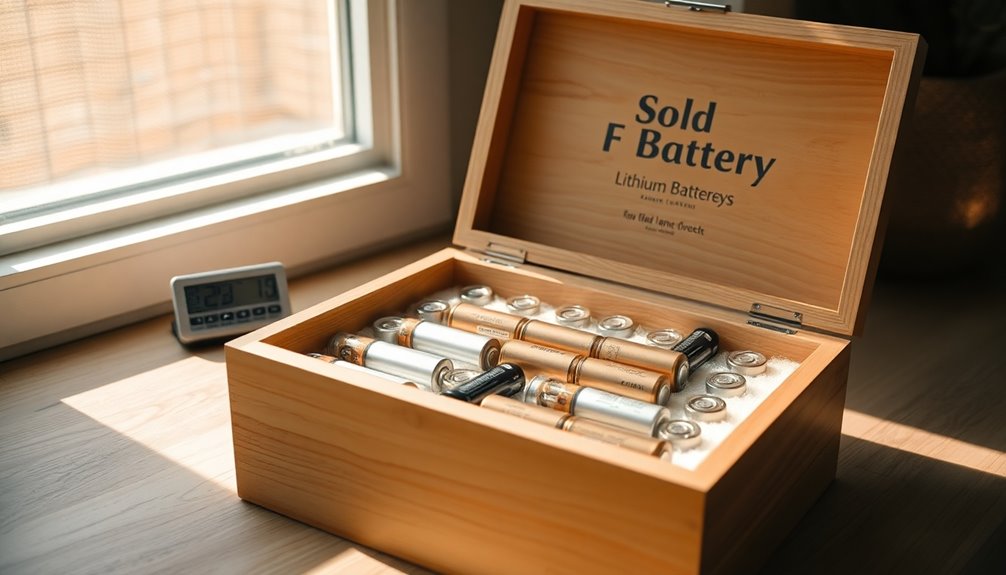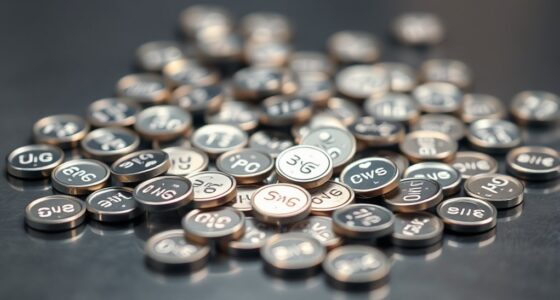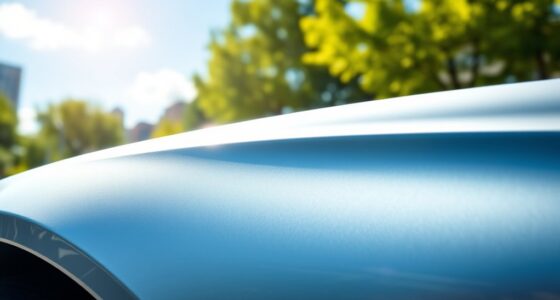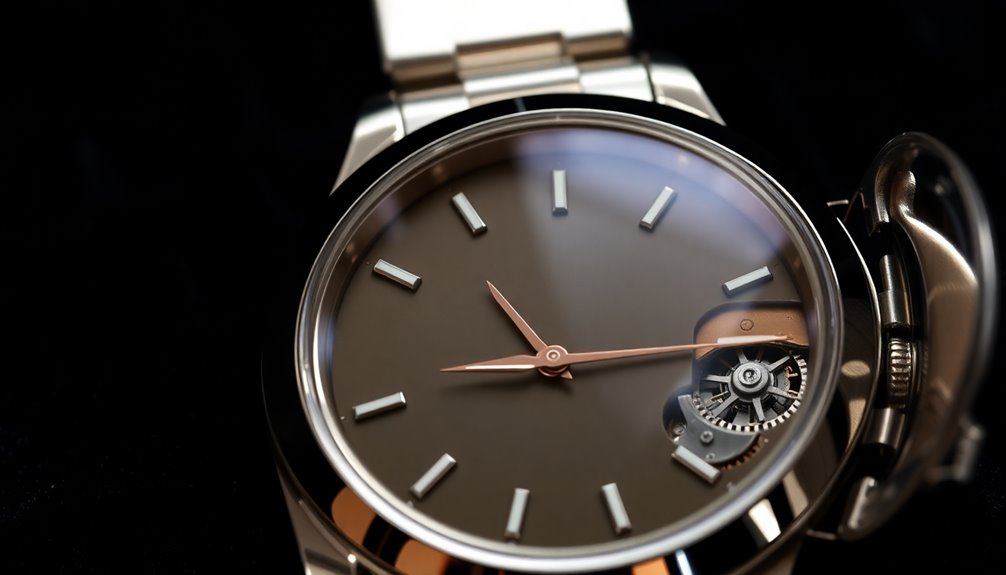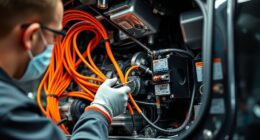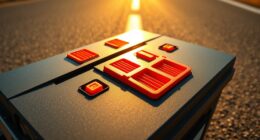Tesla batteries are made from advanced lithium-ion technology, primarily using materials like lithium, nickel, cobalt, and aluminum. For example, a typical Model S battery contains about 63 kg of lithium. Tesla's long-range models often feature lithium nickel cobalt aluminum oxide (NCA) batteries, while entry-level models utilize lithium iron phosphate (LFP) for better cost-effectiveness and safety. These materials guarantee high efficiency and longevity, with newer cell designs, like the 4680-type, improving performance even further. Uncover more about Tesla's battery innovations and sustainability efforts as you explore this fascinating topic!
Key Takeaways
- Tesla's long-range models use lithium nickel cobalt aluminum oxide (NCA) chemistry, while entry-level models feature lithium iron phosphate (LFP) batteries.
- NCA batteries are composed of lithium, nickel, cobalt, and aluminum, enhancing energy density and performance.
- LFP batteries consist of lithium, iron, and phosphate, providing cost-effectiveness and improved safety without cobalt or nickel.
- A typical 70 kWh Model S battery contains approximately 63 kg of lithium, a crucial component for energy storage.
- Tesla employs various battery cell formats, including 2170-type, 4680-type, and prismatic cells, to meet different performance needs.
Overview of Tesla Batteries
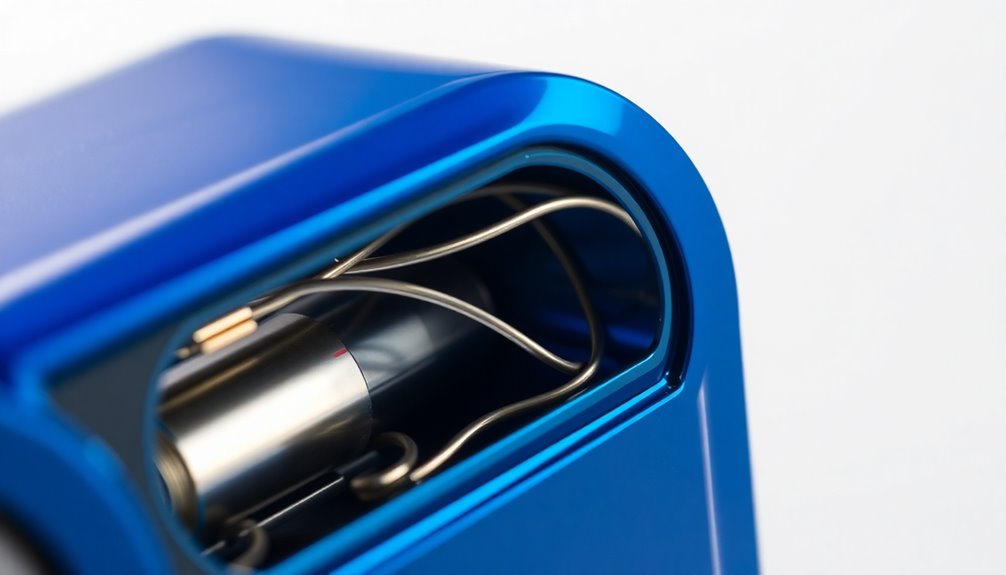
Tesla batteries are at the forefront of electric vehicle technology, driving innovation in energy storage. At the core of Tesla's success are lithium-ion batteries, primarily utilizing lithium nickel cobalt aluminum oxide (NCA) for long-range models. This chemistry provides high energy density and durability, crucial for performance.
For entry-level models, Tesla opts for lithium iron phosphate (LFP) batteries, offering cost-effectiveness and enhanced safety by minimizing overheating risks. A typical 70 kWh Model S battery contains about 63 kg of lithium, highlighting the significant lithium requirements for production.
Tesla's battery cells come in various formats, including the 2170-type and the newer 4680-type, designed to boost energy density and streamline production. Continuous innovation is essential for Tesla's mission to improve performance while reducing reliance on rare materials.
Key Materials in Tesla Batteries

The performance of Tesla batteries hinges on the specific materials used in their construction. Primarily, they utilize lithium-ion technology, with Lithium Nickel Cobalt Aluminum Oxide (NCA) and Lithium Iron Phosphate (LFP) as the most common types.
NCA batteries, found in long-range models, feature lithium, nickel, cobalt, and aluminum, where nickel boosts energy density and cobalt prolongs battery life. On the other hand, LFP batteries, used in entry-level models, consist of lithium, iron, and phosphate, which makes them more cost-effective and enhances safety.
A typical Tesla Model S battery pack contains about 63 kg of lithium, essential for efficient energy storage. By continuously working to reduce reliance on rare materials, Tesla aims for greater sustainability in its battery production.
Types of Battery Cells
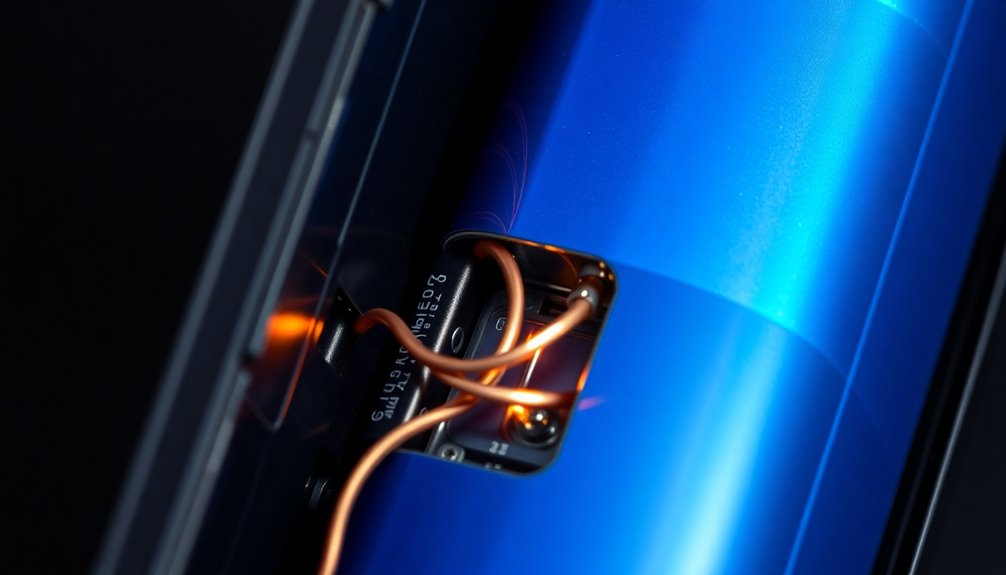
While exploring the various types of battery cells, it's essential to understand how each design serves different models and performance needs.
Tesla employs several battery cell formats, including the 1865-type, primarily found in the original Roadster, Model S, and Model X. The 2170-type cells, offering greater capacity, power the Model 3 and Model Y.
The newer 4680-type cells are designed to enhance energy density and production efficiency, being five times larger than the 2170-type. Additionally, Tesla utilizes prismatic cells from CATL for lithium iron phosphate (LFP) batteries, specifically in entry-level Model 3 and Model Y.
This varied approach to battery cell design helps Tesla meet market demands and optimize performance across its electric vehicle lineup.
Chemistry Behind Tesla Batteries
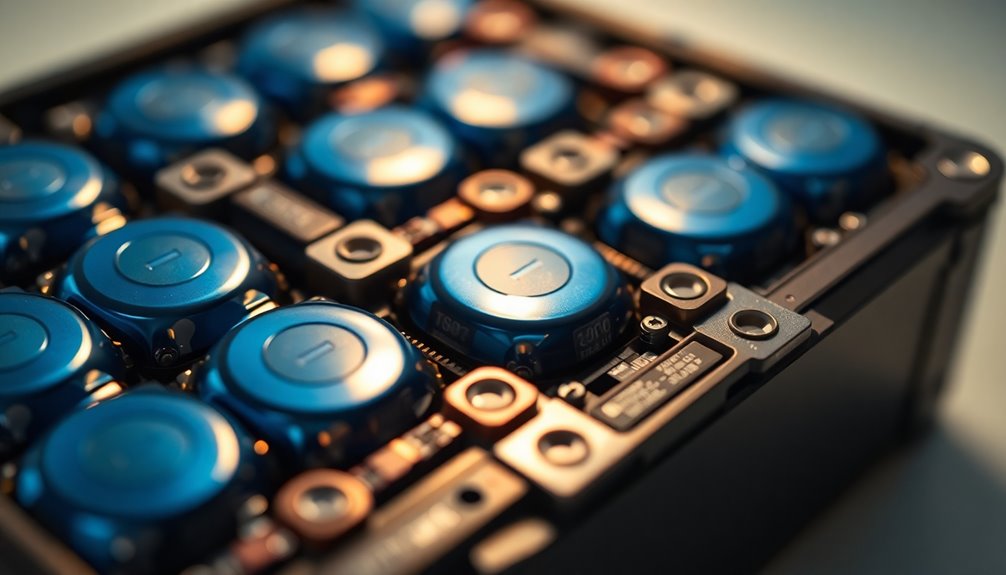
Understanding the chemistry behind Tesla's batteries reveals why they excel in performance and efficiency.
Tesla primarily uses lithium-ion batteries, with the most common being lithium nickel cobalt aluminum oxide (NCA), known for its high energy density. For entry-level models, Tesla opts for lithium iron phosphate (LFP) batteries, which are cost-effective and free from cobalt and nickel.
Key components of Tesla's battery chemistry include:
- Lithium: Essential for energy storage, with around 63 kg in a 70 kWh Model S.
- Nickel: Boosts energy density for longer range.
- Cobalt: Stabilizes lifespan and enhances performance.
- Aluminum: Improves conductivity and structural integrity.
This combination guarantees Tesla batteries deliver impressive efficiency and longevity.
Role of Lithium and Cobalt
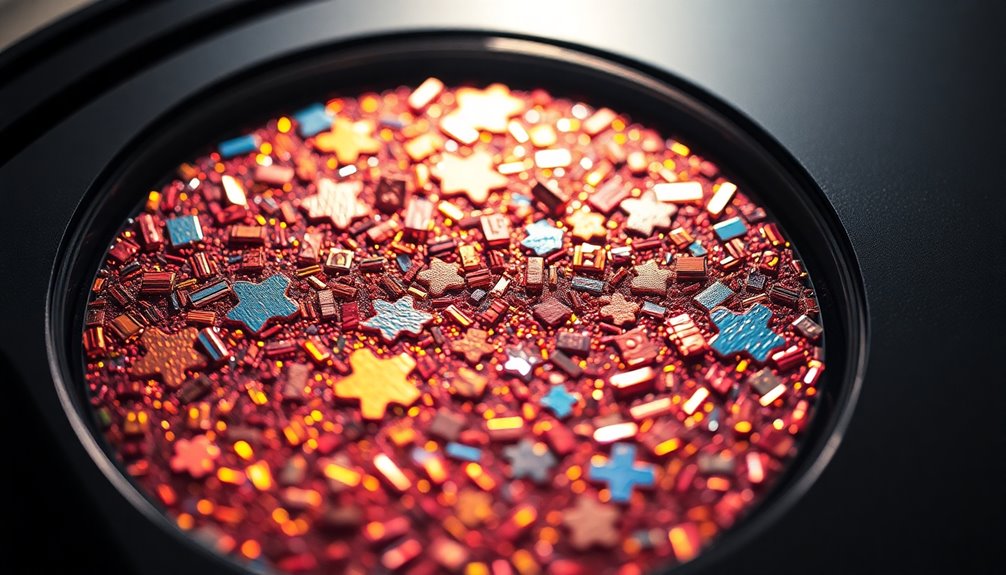
Lithium and cobalt play essential roles in the performance and efficiency of Tesla's batteries, greatly impacting their overall effectiveness.
Lithium is a core element in Tesla's lithium-ion technology, facilitating energy storage and release. Each Tesla Model S battery pack contains around 63 kg of lithium, underscoring its significance.
On the other hand, cobalt is vital for battery cathodes, mainly in lithium nickel cobalt aluminum oxide (NCA) chemistry, which enhances lifespan and stability.
However, a large portion of the world's cobalt supply comes from the Democratic Republic of Congo, raising supply chain concerns.
To address these risks, Tesla is actively exploring new cobalt sources in North America, ensuring stable battery production while mitigating potential bottlenecks in the supply chain.
Alternative Battery Technologies
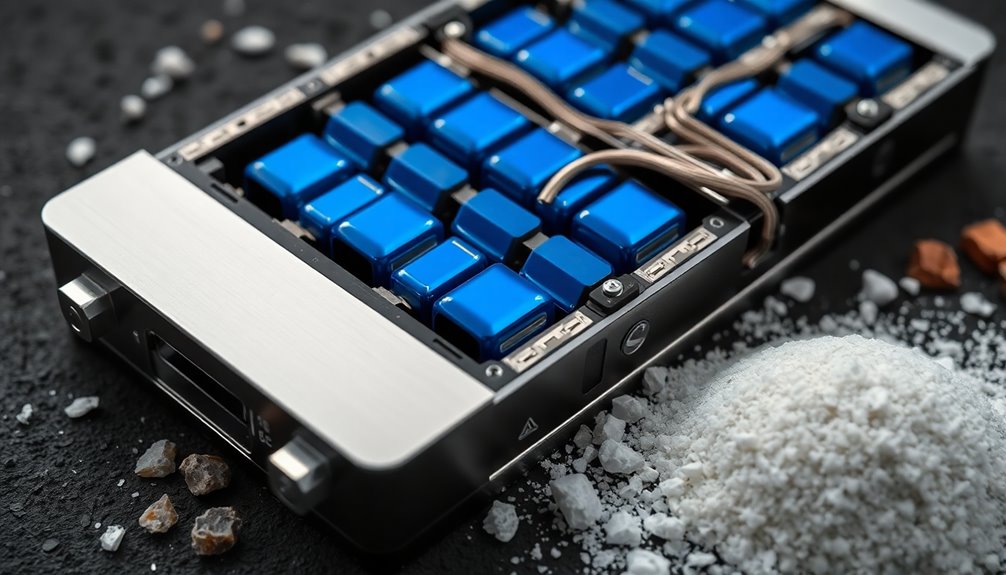
As Tesla continues to innovate, the exploration of alternative battery technologies is becoming increasingly important.
You'll find that Tesla's use of lithium iron phosphate (LFP) batteries enhances cost-effectiveness and safety by eliminating cobalt and nickel.
These batteries provide:
- Improved thermal stability, reducing overheating risks
- A longer cycle life, perfect for entry-level models
- Sustainability through reduced reliance on rare materials
- Ongoing research into solid-state batteries, promising better energy density and safety
Battery Performance and Safety
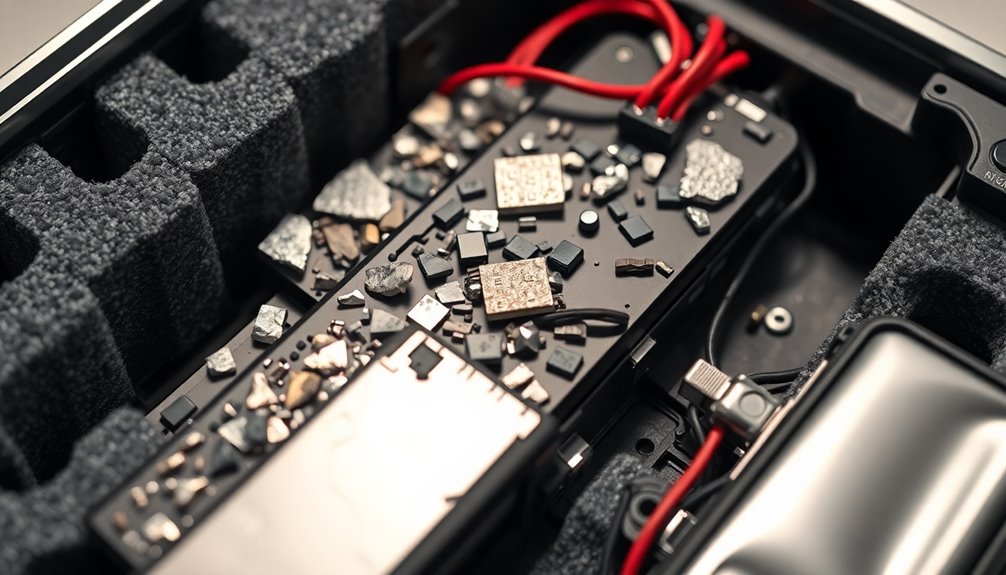
Battery performance and safety are essential considerations for Tesla, especially given the diverse range of models it offers.
Tesla's NCA batteries deliver high efficiency and durability, providing up to 370 miles of range on a single charge. For entry-level models, LFP batteries prioritize safety, utilizing iron and phosphate to reduce overheating risks.
Cobalt is a vital raw material in NCA batteries, stabilizing the battery and extending its lifespan, while nickel boosts energy density. The inclusion of aluminum enhances conductivity and structural integrity, contributing to overall performance.
Tesla continually researches battery technology to improve sustainability and efficiency, aiming to lessen dependence on rare materials while ensuring their battery packs remain safe and high-performing for you on the road.
Sustainability Efforts in Production
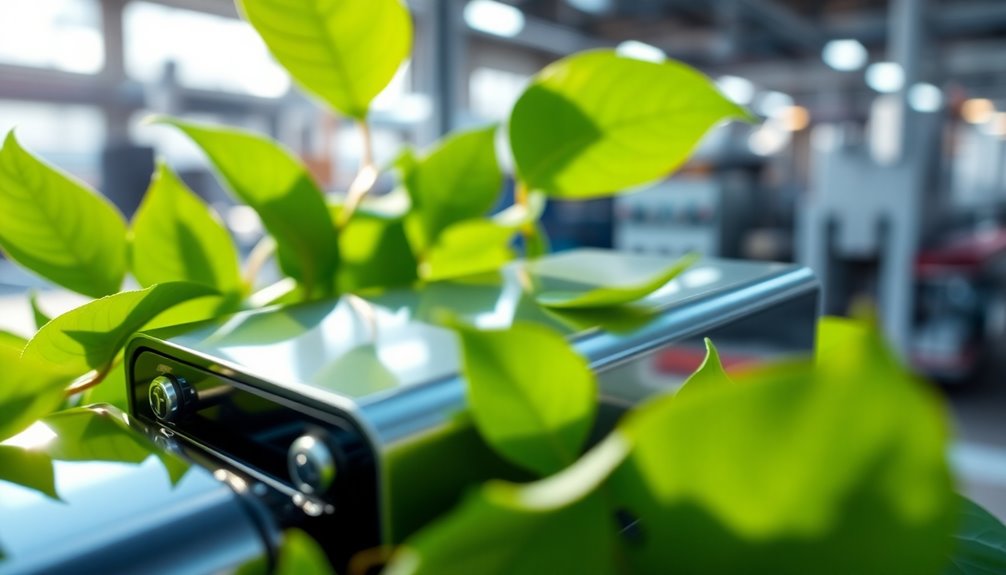
While the demand for electric vehicles continues to grow, Tesla is committed to making its battery production more sustainable. The company actively reduces reliance on cobalt and invests in innovative battery technologies.
Here are some key efforts Tesla is making:
- Developing lithium iron phosphate (LFP) batteries that contain no cobalt or nickel.
- Exploring new supply sources for materials in North America.
- Implementing battery recycling initiatives to recover valuable materials like lithium and nickel.
- Investing in research for solid-state batteries to enhance safety and performance.
These sustainability initiatives not only align with market demand but also guarantee Tesla maintains a resilient supply chain, minimizing waste and promoting responsible resource extraction.
Future Innovations in Battery Technology
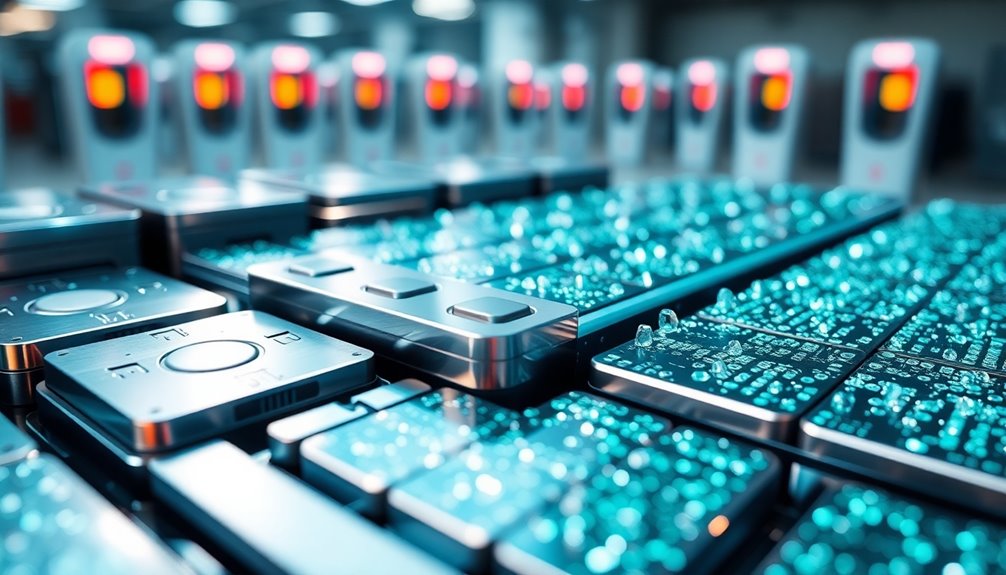
As you explore the future of Tesla's battery technology, solid-state advancements stand out for their potential to enhance safety and energy density.
You might also find battery swapping technology intriguing, as it could revolutionize how drivers recharge their vehicles.
Together, these innovations promise to reshape the landscape of energy storage and efficiency.
Solid-State Battery Advancements
With the rise of solid-state batteries, the future of energy storage looks promising.
You'll find that these innovative batteries utilize a solid electrolyte, enhancing safety and reducing fire risks associated with traditional lithium-ion batteries. Their higher energy density is a game-changer, potentially offering two to three times more storage capacity.
Here are some key advancements to watch for:
- Faster charging: Prototypes can fully charge in under 15 minutes.
- Reduced reliance on cobalt and nickel: This helps address supply chain concerns.
- Commercial rollout: Expect these batteries in the market by the mid-2020s.
- Improved sustainability: Solid-state technology promises greener battery production.
These advancements could revolutionize energy storage and reshape how we power our lives.
Battery Swapping Technology
Battery swapping technology is gaining traction as a practical solution for electric vehicle (EV) owners who want to minimize downtime during long trips. Instead of waiting hours to recharge, you could exchange a depleted battery for a fully charged one in just minutes.
This innovation addresses range anxiety, enabling you to set out on longer journeys without the worry of long charging waits. While Tesla explored this concept in 2013, they shifted focus to enhancing their Supercharger network.
However, companies like NIO have successfully implemented battery swapping stations, proving the model's viability. Future developments may standardize battery designs across manufacturers, increasing compatibility and making battery swapping technology a mainstream option for electric vehicles.
Frequently Asked Questions
What Are the Ingredients in the Tesla Battery?
When you look at Tesla batteries, you'll find they mainly use lithium-ion technology.
The key ingredients include lithium, nickel, cobalt, and aluminum. Lithium boosts energy storage, while nickel enhances energy density. Cobalt stabilizes the battery's lifespan, and aluminum aids conductivity.
For entry-level models, Tesla opts for lithium iron phosphate, which swaps out cobalt and nickel for a more cost-effective solution.
This mix guarantees your Tesla runs efficiently and sustainably.
What Is Unique About Tesla Battery?
You won't believe how Tesla batteries are revolutionizing the electric vehicle game!
They're unique because they blend cutting-edge lithium-ion technology with innovative cell designs, like the game-changing 4680 cells that boost capacity dramatically.
Plus, Tesla's diverse battery strategy means they're always exploring new chemistries for better performance.
With a focus on sustainability and safety, you're not just driving a car; you're powering a future that's smarter and greener than ever!
What Is the Tesla 4680 Battery Made Of?
The Tesla 4680 battery's made up of advanced materials designed to boost performance.
You'll find a high-nickel cathode that enhances energy density, essential for longer ranges. The tabless architecture reduces internal resistance, allowing faster charging and better heat management.
Tesla's focused on reducing cobalt use, aiming for more sustainable production.
With these innovations, you're looking at a battery that not only improves efficiency but also lowers manufacturing costs for future vehicles.
How Much Aluminium Is in a Tesla Battery?
When you look at a Tesla battery, you'll find that aluminum typically makes up about 5-10% of its total composition.
This metal isn't just for the cathode; it's also used in various battery components, helping reduce weight and improve efficiency.
Plus, aluminum plays an essential role in thermal management, ensuring your battery performs well and stays safe during operation.
Conclusion
To sum up, understanding what's in Tesla batteries reveals a blend of cutting-edge materials and innovative technology that drives the electric vehicle revolution. With components like lithium and cobalt, these batteries not only power your ride but also pave the way for a sustainable future. As Tesla pushes the envelope, it's like watching the dawn of a new age—imagine a world where your car runs on the very air we breathe. The future's looking bright!

